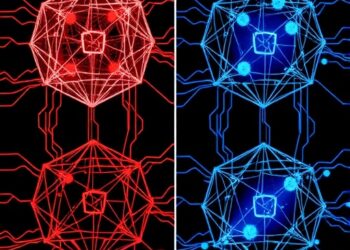When neuroscientists think about the strategy an animal might use to carry out a task – like finding food, hunting prey, or navigating a maze – they often propose a single model that lays out the best way for the animal to accomplish the job.
When neuroscientists think about the strategy an animal might use to carry out a task – like finding food, hunting prey, or navigating a maze – they often propose a single model that lays out the best way for the animal to accomplish the job.
But in the real world, animals – and humans – may not use the optimal way, which can be resource intensive. Instead, they use a strategy that’s good enough to do the job but takes a lot less brain power.
In new research, Janelia scientists set out to better understand the possible ways an animal could successfully solve a problem, beyond just the best strategy.
The work shows there are a huge number of ways an animal can accomplish a simple foraging task. It also lays out a theoretical framework for understanding these different strategies, how they relate to each other, and how they solve the same problem differently.
Some of these less-than-perfect options for accomplishing a task work nearly as well as the optimal strategy but with a lot less effort, the researchers found, freeing up animals to use precious resources to handle multiple tasks.
“As soon as you release yourself from being perfect, you would be surprised just how many ways there are to solve a problem,” says Tzuhsuan Ma, a postdoc in the Hermundstad Lab who led the research.
The new framework could help researchers start examining these “good enough” strategies, including why different individuals might adapt different strategies, how these strategies might work together, and how generalizable the strategies are to other tasks. That could help explain how the brain enables behavior in the real world.
“Many of these strategies are ones we would have never dreamed up as possible ways of solving this task, but they do work well, so it’s entirely possible that animals could also be using them,” says Janelia Group Leader Ann Hermundstad. “They give us a new vocabulary for understanding behavior.”
Looking beyond perfection
The research began three years ago when Ma started wondering about the different strategies an animal could possibly use to accomplish a simple but common task: choosing between two options where the chance of being rewarded changes over time.
The researchers were interested in examining a group of strategies that fall between optimal and completely random solutions: “small programs” that are resource-limited but still get the job done. Each program specifies a different algorithm for guiding an animal’s actions based on past observations, allowing it to serve as a model of animal behavior.
It turns out, there are a lot of such programs – about a quarter of a million. To make sense of these strategies, the researchers first looked at a handful of the top performing ones. Surprisingly, they found they were essentially doing the same thing as the optimal strategy, despite using fewer resources.
“We were a little disappointed,” Ma says. “We spent all this time searching for these small programs, and they all follow the same computation that the field already knew how to mathematically derive without all this effort.”
But the researchers were motivated to keep looking – they had a strong intuition that there had to be programs out there that were good but different from the optimal strategy. Once they looked beyond the very best programs, they found what they were looking for: about 4,000 programs that fall into this “good enough” category. And more importantly, more than 90 percent of them did something new.
They could have stopped there, but a question from a fellow Janelian spurred them on: How could they figure out which strategy an animal was using?
The question prompted the team to dive deep into the behavior of individual programs and develop a systematic approach to thinking about the entire collection of strategies. They first developed a mathematical way to describe the programs’ relationships to each other through a network that connected the different programs. Next, they looked at the behavior described by the strategies, devising an algorithm to reveal how one of these “good enough” programs could evolve from another.
They found that small changes to the optimal program can lead to big changes in behavior while still preserving performance. If some of these new behaviors are also useful in other tasks, it suggests that the same program could be good enough for solving a range of different problems.
“If you are thinking about an animal not being a specialist who is optimized to solve just one problem, but rather a generalist who solves many problems, this really is a new way to study that,” Ma says.
The new work provides a framework for researchers to start thinking beyond single, optimal programs for animal behavior. Now, the team is focused on examining how generalizable the small programs are to other tasks and designing new experiments to determine which program an animal might be using to carry out a task in real time. They are also working with other researchers at Janelia to test their theoretical framework.
“Ultimately, getting a strong grasp on an animal’s behavior is an essential prerequisite to understanding how the brain solves different types of problems, including some that our best artificial systems only solve inefficiently, if at all,” Hermundstad says. “The key challenge is that animals might be using very different strategies than we might initially assume, and this work is helping us uncover that space of possibilities.”
Journal
Science Advances
Article Title
A vast space of compact strategies for effective decisions
Article Publication Date
21-Jun-2024




